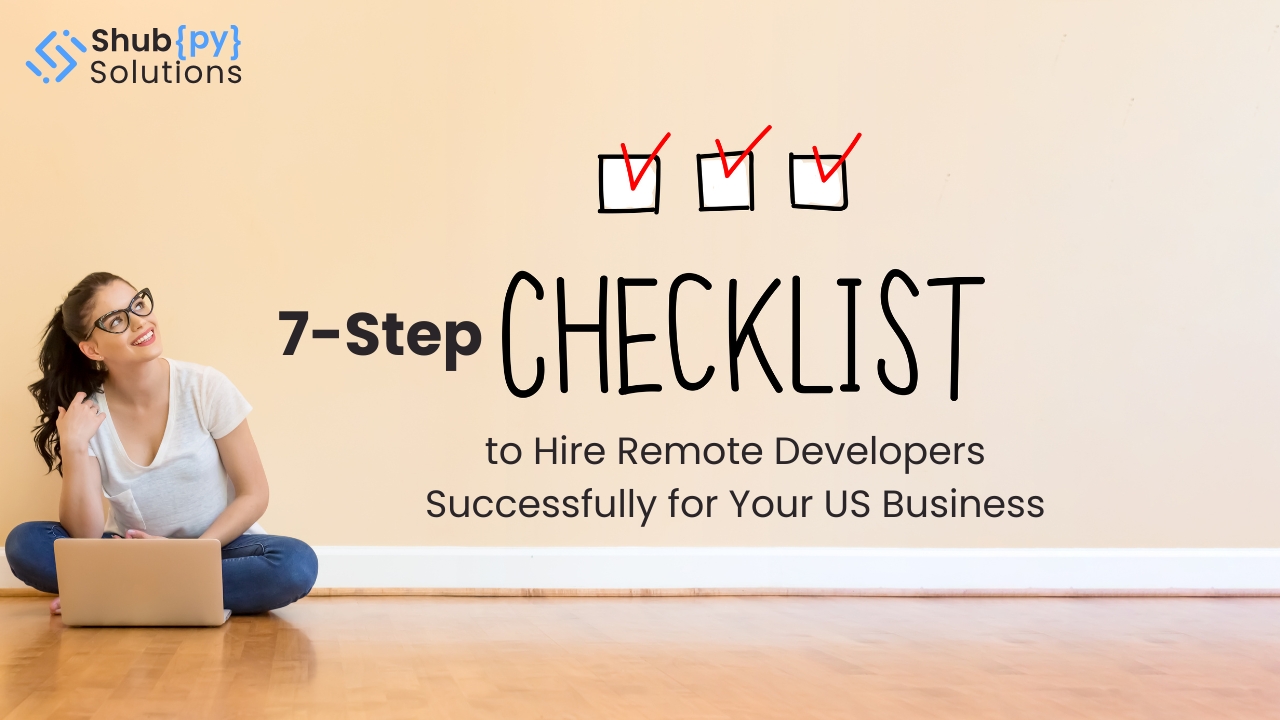Introduction
Many businesses across the United States are experiencing the best of digital transformation. With that, the demand to hire remote developers is increasing and businesses are looking forward to remote hiring.
From new businesses to industry giants, remote hiring is the go-to plan for all to build cost-efficient teams. However, numerous factors are responsible for the success of remote hiring, including compliance. Here’s a checklist that helps US companies hire remote software developers efficiently and have flexible teams.
Step 1: Define Your Development Needs Clearly
Before you start hiring, identify what kind of developers you need for your project. Are you looking for full-stack developers or an expert back-end team? Note down the skills and frameworks you require for the project.
A clear scope of work prevents hiring the wrong candidate and helps you include the right one within the team. It also saves time that otherwise goes into the onboarding process. This ensures you have candidate profiles who can immediately contribute to your project goals.
Step 2: Choose the Right Hiring Model
When you hire remote developers, you can select from varying engagement models depending on the timeline and nature of your project:
- Freelancers: Ideal for short-term projects.
- Dedicated Developers: Best for long-term projects where skills matter.
- Remote Development Teams: Suitable for scaling business with multiple hirings.
Evaluate each of the hiring models based on costs and your project-specific requirements. For US businesses, dedicated developers often are the right choice as they offer flexibility with ownership.
Step 3: Source Talent from Reliable Platforms
Sourcing the right candidate profile is as important as hiring the best candidate for your needs. You must consider partnering with a trusted remote development company that specializes in matching you with the right developers.
Agencies often handle vetting and compliance which saves you from the administrative hassles. Whether you are hiring remote developers for a US company or globally, working with a professional agency ensures faster onboarding.
Step 4: Conduct Structured Technical Assessments
To ensure that you hire qualified developers, look beyond resumes of the candidates. Create a systematic evaluation process that also assesses their:
- Technical skills related to your project’s needs.
- Coding skills or last minute error resolution.
- Soft skills for better communication & team collaboration.
Remote developers must also showcase their problem-solving and ownership skills, which are important for working across time zones.
Step 5: Address Legal & Compliance Requirements
This is one of the most important parts of hiring remote developers for US companies. Legal and compliance issues usually vary depending on whether you hire contractors or full-time employees.
Use a legal & compliance checklist to verify:
- Employment classification
- Tax and payroll compliance
- Property ownership agreements
- Data protection policies
Collaborating with a partner who has knowledge of global hiring laws can help you stay compliant.
Step 6: Set Up Effective Communication & Collaboration Tools
Once you hire your team, provide them with the right tools for enhanced productivity. Remote teams often perform well when they can collaborate without any challenges.
Use:
- Slack / Teams for communication
- Trello / Asana for task management
- GitHub / Bitbucket for version control
- Zoom / Google Meet for regular check-ins
Set communication norms, define daily updates, meeting frequencies, and feedback loops. A transparent workflow keeps your remote software developers engaged and helps achieve targets faster.
Step 7: Build a Culture of Trust & Continuous Improvement
The final step to hire remote developers is maintaining engagement while ensuring timeline specificity. Build a work environment that promotes:
- Clear targets & measurable KPIs
- Recognition and appreciation
- Continuous upskilling
- Desired work-life balance
Review regularly and offer feedback to your remote developers so they become a part of your US-based business.
Bonus Tips for Long-Term Remote Hiring Success
- Start hiring with only the needed number of developers before scaling.
- Document your onboarding process systematically.
- Use collaboration tools with advanced AI and automation features.
- Always sign NDAs and agreements before project initiation.
These crucial steps will protect your business legally while ensuring smooth collaboration despite time-zone differences.
Conclusion
Hiring remotely offers US businesses access to top talent with lower operational costs and flexibility. However, you must follow a structured approach covering the technical and legal aspects.
With this checklist, your business can confidently hire remote developers, ensure compliance, and build a high-performing tech team that drives revenues.
Whether you own a startup or an established enterprise, the right hiring strategy can turn remote development from a challenge into your biggest competitive advantage.

